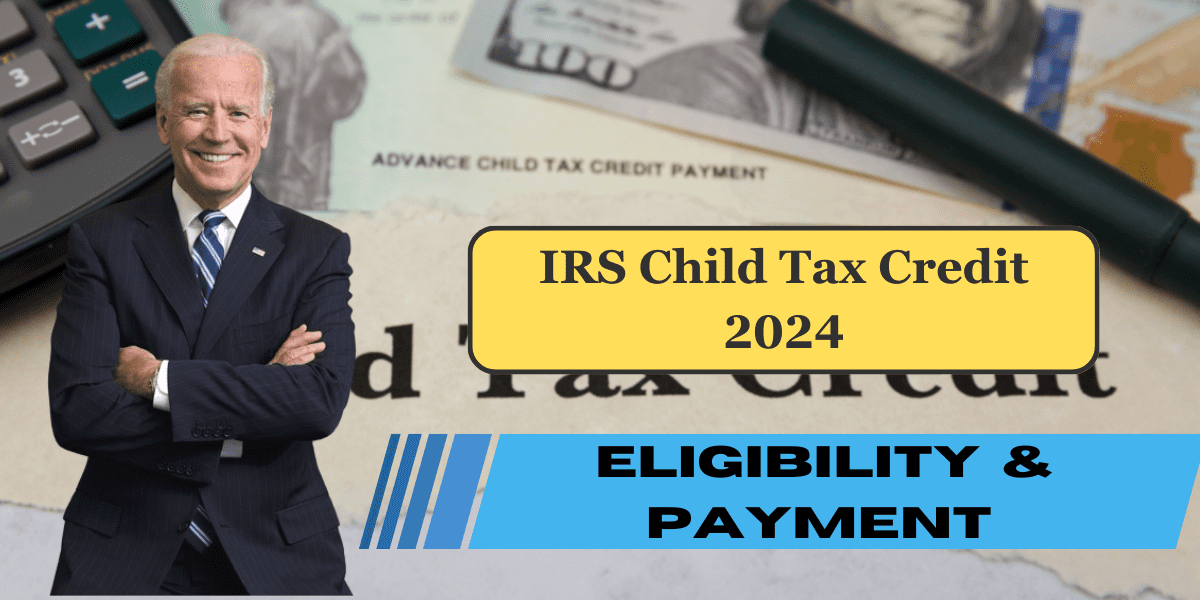As of now, there have been no official announcements regarding changes to the Child Tax Credit amount for 2024. However, based on our research, it’s evident that the Child Tax Credit remains a federal tax benefit aimed at supporting taxpayers raising children.
The credit has been a hot topic throughout 2024, with legislators initially intending to expand it before the filing season. Unfortunately, they were unable to achieve this goal in time, leading to modifications as many taxpayers rushed to file their returns before the April 15, 2023 deadline.
Table of Contents
What is the Child Tax Credit?
The Child Tax Credit is a tax credit that can’t be returned and is given to people with children under 17 who depend on them. This credit directly reduces your tax liability on a dollar-for-dollar basis. Some taxpayers may also qualify for a partial refund through the “additional child tax credit.”
Eligibility for the credit depends on meeting certain criteria, including the child’s age and relationship to the claimant. Taxpayers must also adhere to income limits, as the credit phases out for higher earners. Exceeding the modified adjusted gross income (MAGI) limit for your filing status can reduce or eliminate the credit amount.
In 2024, eligible taxpayers with children under 17 can receive up to $2,000 per child, with a refundable portion of up to $1,600. For more information, visit the official IRS website at www.irs.gov.
| 1000 Rental Assistance For Social Security |
| Canada Disability Benefit 2400 Payment |
| 5600 Month July 2024 |
| New Bill Increasing Social Security Checks In Us |
| Canada Pension Plan |
2024 Child Tax Credit Updates
The Tax Relief for American Families and Workers Act of 2024, which aimed to amend the Child Tax Credit, did not pass the Senate as of August 1, 2024. If enacted, the bill would have:
- Increased the refundable amount to $1,900 for 2024 and $2,000 for 2025, and adjusted the base credit for inflation.
- Allowed parents to account for the number of children when calculating the total credit amount.
- Enabled filers to use earned income from either the current or prior year to meet eligibility requirements.
Despite the bill’s failure, the credit remains at $2,000 per qualifying child with a refundable amount of $1,600. Taxpayers should ensure they meet eligibility requirements for the Child Tax Credit in 2024.
IRS Child Tax Credit August 2024 Summary
| Attribute | Details |
|---|---|
| Program Name | US CTC Credit |
| Organized By | Internal Revenue Service |
| Provided By | Federal Government |
| Amount | $2,000 (Varies) |
| Post Category | Finance |
| Official Website | www.irs.gov |
Eligibility Requirements for the Child Tax Credit
To claim the Child Tax Credit, you need to meet seven key criteria:
| Criteria | Details |
|---|---|
| Age | The child must be a son, daughter, stepchild, foster child, sibling, half-sibling, or a descendant. |
| Relationship | The child must be a dependent and cannot file a joint tax return, except to claim a refund. |
| Dependent Status | For the most part, the child must have stayed with you for at least half the year. |
| Residency | The child must be a son, daughter, stepchild, foster child, sibling, half-sibling, or descendant. |
| Financial Support | You must provide at least half of the child’s financial support. |
| Citizenship | Child must be a U.S. citizen, U.S. national, or U.S. who is a resident alien and has a valid Social Security card. |
| Income | Your income must be below certain thresholds; the credit phases out as income exceeds these limits. |
Child Tax Credit Amount for 2024
For 2024, the Child Tax Credit amount remains at $2,000 per eligible child, with the potential for up to $1,700 in additional refundable credit. The phase-out thresholds are similar to previous years: $400,000 for married couples filing jointly and $200,000 for single filers. The credit reduces by $50 for every $1,000 above these income limits.
Disclaimer and Key Facts
On January 31, 2024, the House of Representatives approved the Tax Relief for American Families and Workers Act, which proposed changes to the Child Tax Credit. However, the bill has faced delays in the Senate, casting doubt on its future.
The current refundable Child Tax Credit remains at $1,600 per child, with expected increases to $1,900 and $2,000 in 2024 and 2025, respectively, pending legislative action.
when will the IRS start processing electronic returns with child tax credit?
The IRS generally begins processing electronic tax returns in late January each year. For the Child Tax Credit, if there have been updates or changes to the credit for the current tax year, they are usually reflected in the IRS guidelines and processing schedules by then. If you’re filing your return electronically and claiming the Child Tax Credit, ensure your tax software or tax preparer is up to date with the latest IRS information for the most accurate filing. If you’re asking about a specific year’s start date, I’d recommend checking the IRS website or recent announcements for the exact timing.
How to Claim the Child Tax Credit
To claim the Child Tax Credit for 2024, file your tax return in 2025. For 2023 returns due by April 15, 2024, or October 15, 2024, if extended, use Form 1040 or 1040-SR and include Schedule 8812. Tax software can simplify this process, and IRS Free File may be available for those below certain income thresholds.
Additional Child Tax Credit
If you cannot use the full Child Tax Credit due to insufficient tax liability, you might be eligible for the Additional Child Tax Credit (ACTC). To qualify:
- Earned income must be at least $2,500 or you must have three or more qualifying dependents.
- You cannot exclude foreign-earned income with Forms 2555 or 2555-EZ.
- The ACTC amount is calculated by multiplying earned income above $2,500 by 15%, up to a maximum of $1,700 per dependent.
FAQs
When can you expect your Child Tax Credit refund?
The IRS can only release refunds for returns claiming the ACTC starting mid-February. Paper returns may experience longer processing times. Use the IRS “Where’s My Refund” tool for updates.
What is the $500 credit for other dependents (ODC)?
If a child or relative does not meet the Child Tax Credit criteria but is a dependent, you may qualify for a $500 nonrefundable credit known as the “credit for other dependents.” The IRS website has tools to determine eligibility.




